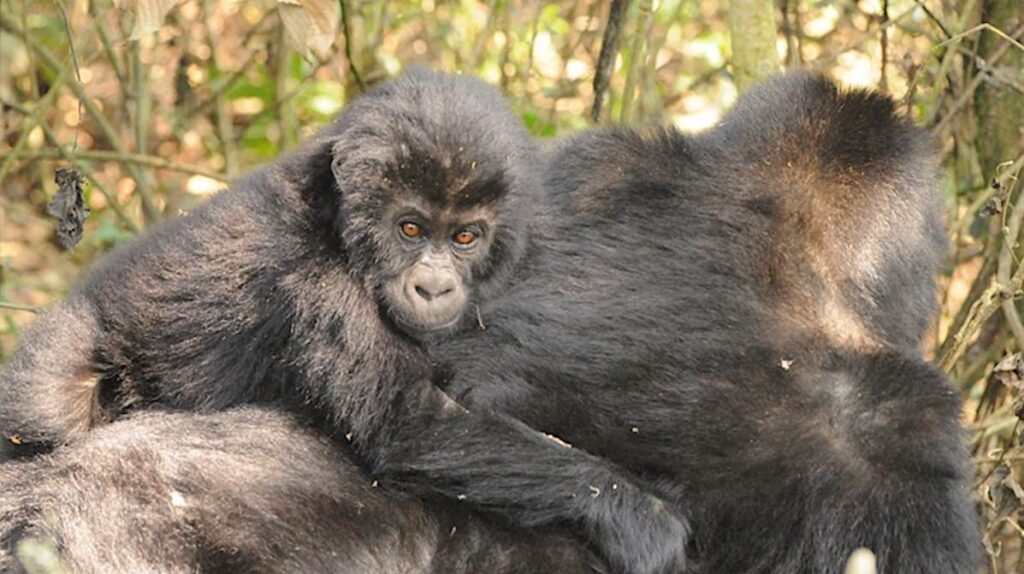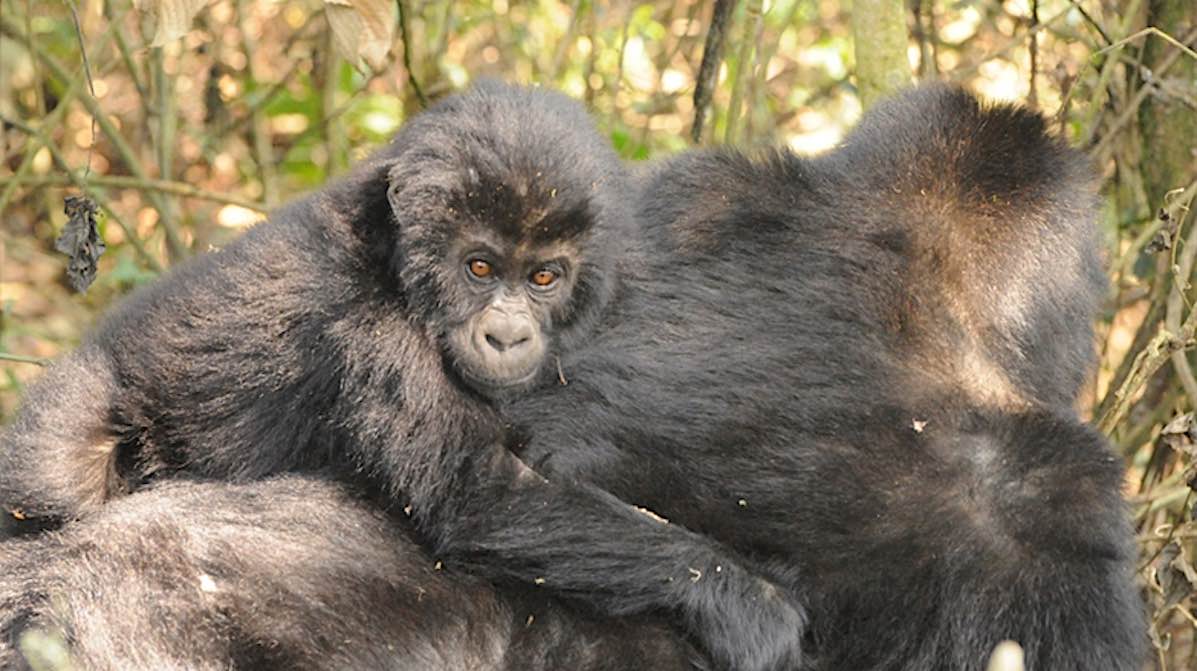A new study estimated the global population of Grauer’s gorillas—the world’s largest gorilla subspecies–and it reported good news for rangers, nonprofits, and caretakers who have been saving this Critically Endangered animal.

From a previous global estimate of 3,800 individuals, the number has almost doubled to 6,800 individuals.
This revised estimate comes from recent field surveys conducted in one of this animal’s largest remaining strongholds, an area that was previously inaccessible for surveys in eastern Democratic Republic of Congo.
Led by the Wildlife Conservation Society (WCS), results were published in the American Journal of Primatology.
A previous peer-reviewed paper led by WCS in 2016 showed a decline of almost 80 percent in the population of these gorillas since the last range-wide survey carried out in the mid-1990s. However, due to insecurity in the region, the 2016 estimate did not include data from all areas of the Grauer’s gorilla range.
RELATED: Couple Gives $100 Million to Conservation of 57,000 Square Miles of African Protected Areas
The 2021 population estimate includes new field surveys in the Oku forests and suggest declines were not as great as previously feared. The findings also provide hope for the conservation of Grauer’s gorilla, as populations in the highland sectors of the Kahuzi-Biega National Park have also remained relatively stable over the past 20 years..
“It is a tribute to the courage and dedication of the Congolese biologists who took part,” said the study’s lead author Dr. Andrew Plumptre, Key Biodiversity Area Secretariat hosted by Birdlife International, who conducted the research with WCS.
Additionally, there is good news for chimpanzee populations, which have also held steady over the past twenty years.
“We show that gorillas and chimpanzees are avoiding areas where people are extracting minerals, an occupation that contributes to the insecurity in the region,” said Plumptre.
Grauer’s gorillas (Gorilla beringei graueri) are a subspecies of eastern gorilla found only in the eastern Democratic Republic of Congo and can weigh over 450 pounds (204 kilograms).
The authors say that the results of the study underscore the importance of good forest protection in the region. In 2018, three local community forest concessions comprising a total area of 1,465 square kilometers (565 square miles) were created and attributed to community management in Oku.
Additionally, WCS is working with these communities, the Government’s Nature Conservation Agency, ICCN, and the local NGO Reserve des Gorilles de Punia (RGPu), to create an additional Wildlife Reserve in the Oku forests to secure up to 3,000 square kilometers (1,158 square miles) of forest for gorillas and other flora and fauna in this area.
MORE: Rare Rhino Species Sees Dramatic Population Growth – From Just 100 to 3,700 Today—as Poaching Falls
More than 80 percent of the world’s supply of coltan—used in many electronic devices—is found in the DRC, including much of the Grauer’s gorilla’s prior habitat. The focus of conservation efforts must now be on supporting local community management of the Oku forests to protect gorillas and their habitats.
HANG This Great News From the Trees on Social Media…




















